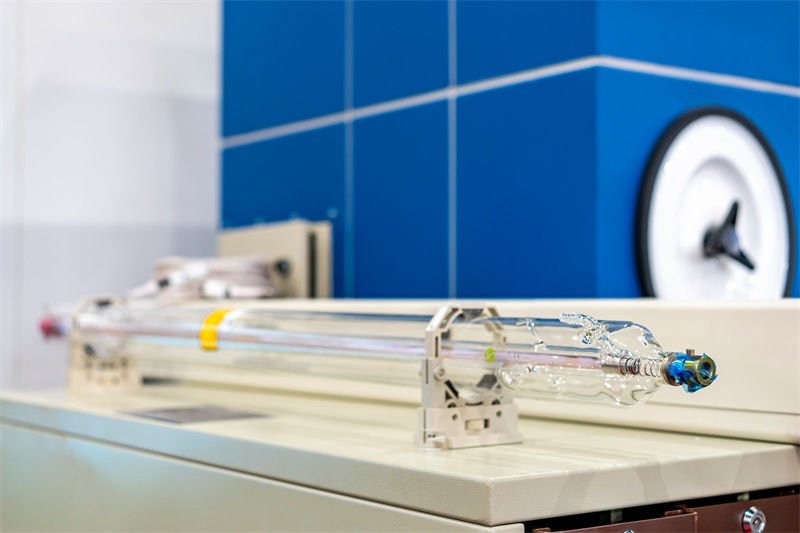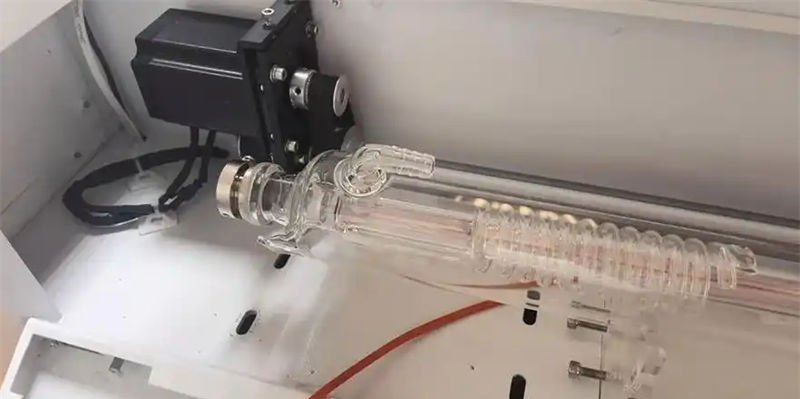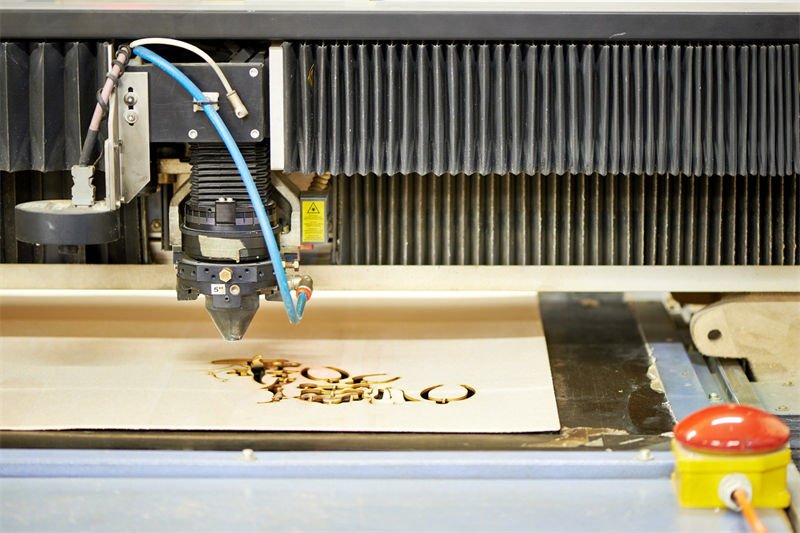
Understanding CO2 laser tubes is similar to picking the right pair of shoes. Style and strength are very important.
Glass CO2 laser tubes cost less but break easily, often requiring new ones. Metal tubes cost more initially. However, these metal tubes are strong and work well, saving money over time.
The first glance shows important differences. Looking closer at pros and cons of each option is crucial for a choice that fits your situation. I remember considering this decision. It felt like choosing between a trusty old car and a shiny new one. Experts and users share stories and advice that could probably match your experiences.
Glass CO2 laser tubes are more affordable than metal ones.True
Glass tubes are cheaper due to lower production costs and materials.
Metal CO2 laser tubes require more frequent replacements than glass.False
Metal tubes are more durable, thus needing fewer replacements.
What Are the Key Differences Between Glass and Metal CO2 Laser Tubes?
Selecting the right CO2 laser tube might feel as exciting and overwhelming as choosing a new phone. Is glass better or is metal the way to go? Let’s look at how they differ and discover the one that suits your needs best.
Glass CO2 laser tubes cost less and are easy to switch out. However, they lack the durability of metal tubes. Metal tubes, although pricier, last longer and provide reliable performance. These metal tubes are really good for heavy use.

Construction and Material
When I entered the laser equipment market, I quickly learned about the materials used in these tubes. Glass CO2 laser tubes use borosilicate glass. This glass helps keep costs low because it resists heat changes. However, these tubes are like fragile crystal glasses; they look good but can break easily. Metal tubes, often crafted from aluminum or steel, remind me of the tough cast iron pans in my kitchen. They are strong, last long and are good for heavy industrial tasks.
Performance and Stability
From my experience, metal CO2 laser tubes deliver consistent performance. Imagine cutting a complex design with a power source that flickers—it does not work! Metal tubes keep a stable power output, which is very important for precise tasks like engraving or intricate cutting. Glass tubes, on the other hand, may lose power over time like an old battery that can’t hold charge.
Power Output and Efficiency
Both tube types reach similar power levels. However, metal tubes work more efficiently. They remind me of energy-saving appliances that save on bills by better converting electrical energy to laser energy. This efficiency reduces energy costs significantly, which is very smart for businesses that focus on working efficiently.
Lifespan and Maintenance
A CO2 laser tube’s lifespan very much matters. Metal tubes usually last longer than glass ones—they are like the tortoises in the race for durability. They cost more at first but their long life often cuts down on replacement and maintenance costs later.
Cost Considerations
Running a small business taught me that initial cost often plays a big role in decisions. Glass tubes cost less upfront—similar to picking economy over first class flights—yet when thinking about maintenance and lifespan, metal tubes might offer better overall value.
Applications in Industry
In my field, I’ve seen glass CO2 laser tubes perform well in light tasks where cost matters more than durability or precision—great for small engravings or hobbies. Metal tubes, however, really shine in tough industrial settings where steady performance and strength are crucial, like large-scale production.
| Feature | Glass CO2 Laser Tubes | Metal CO2 Laser Tubes |
|---|---|---|
| Material | Borosilicate Glass | Aluminum/Steel |
| Durability | Fragile | Highly Durable |
| Power Output | Less Stable | More Consistent |
| Efficiency | Lower | Higher |
| Lifespan | Shorter | Longer |
| Cost | Lower Initial Cost | Higher Initial Cost |
Understanding these differences guides the right CO2 laser tube choice for your needs and budget. Balancing immediate costs and efficient long-term use is important. If you’re like me, choosing wisely often feels like a little win in this fast-paced world.
Metal CO2 laser tubes have a longer lifespan than glass tubes.True
Metal tubes last longer due to durable materials like aluminum or steel.
Glass CO2 laser tubes are more efficient than metal tubes.False
Metal tubes convert energy more effectively, offering higher efficiency.
How Do Performance and Durability Compare in Real-world Applications?
Laser equipment often needs high performance while staying strong and lasting long. Sometimes, this feels as tricky as walking on a narrow rope. Let us explore how these two important things work together in real situations.
Performance and durability often depend on using the right materials, good design and proper care. High-performance materials offer quick benefits. These benefits might not last. A strong design is necessary for lasting results.

Understanding Performance and Durability
When I began working with laser gear, I found that performance is more than just speed or accuracy. It’s about how smoothly a machine finishes its job. Imagine comparing a sleek sports car to a strong SUV. Each has special strengths for different needs. Laser machines might slice metal like a dancer with style. Durability keeps them running without endless fixes.
Once, I bought a high-performance laser cutting machine1. It impressed me with precision and swiftness. But, without durable design, I often called maintenance. This experience taught me; balancing performance and durability is essential.
Material Choices and Their Impact
Materials chosen significantly impact performance and durability. Think of this: aluminum alloys, being light, can make machines move like gymnasts. Yet, they risk rusting, needing more care as time passes. Conversely, steel-based components2 offer strength but reduce agility.
Consider a table comparing common materials:
| Material | Performance Advantages | Durability Challenges |
|---|---|---|
| Aluminum Alloys | Lightweight, Agile | Prone to Corrosion |
| Steel | Strong, Durable | Heavier |
| Titanium | High Strength-to-Weight | Costly |
Maintenance: The Balancing Act
Regular maintenance acts as a quiet hero, keeping everything smooth. Even sturdy machines require care to stop efficiency from fading. Planning a detailed maintenance schedule3 is a habit for me. It keeps equipment steady and performs well.
By matching maintenance to how machines are used, I have retained efficiency and reliability. This method is crucial for my business—keeping prices competitive while maintaining quality is vital.
Understanding these factors aids me in wise investments. Balancing the immediate draw of high performance with long-lasting durability benefits is key. My decisions are shaped by experiences and my ever-changing business needs.
High-performance lasers require more frequent maintenance.True
High-performance machines often need regular maintenance to sustain efficiency.
Steel components in lasers improve performance but reduce durability.False
Steel improves durability but may reduce agility, not performance.
Which Type of CO2 Laser Tube is Best for Your Specific Needs?
Have you ever felt confused about picking the right CO2 laser tube? Let’s solve this puzzle together and find the perfect one for you!
Choosing between DC-excited and RF-excited CO2 laser tubes depends on your specific needs. DC-excited tubes cost less for engraving tasks. RF-excited tubes provide higher precision and last longer. These tubes work great for industrial applications.

Understanding CO2 Laser Tubes
CO2 laser tubes are vital components of laser machines, primarily used for cutting, engraving, and marking. They function by exciting carbon dioxide gas to produce a laser beam. The two main types of CO2 laser tubes are DC-excited and RF-excited.
| Type | Advantages | Disadvantages |
|---|---|---|
| DC-Excited | Cost-effective, great for hobbyists and small businesses | Shorter lifespan, requires frequent maintenance |
| RF-Excited | High precision, longer lifespan, less maintenance | More expensive, complex technology |
DC-Excited CO2 Laser Tubes
Imagine you have a small business or a hobby. Maybe you use a DC-excited laser tube because it costs less. These tubes use direct current to excite CO2 gas, suitable for everyday engraving or cutting tasks. These tubes are particularly suited for small businesses4 and hobbyists looking to perform basic engraving or cutting tasks.
However, they need more care—think of it like an old car that needs regular checks. These tubes wear out faster and generally have a shorter lifespan, often requiring more frequent maintenance and replacement.
RF-Excited CO2 Laser Tubes
Suppose precision is crucial. You work in an industry where exactness is key. RF-excited tubes are ideal here as they use radio frequency to create laser beams, giving stable and precise results. This technology allows for a more stable and precise output, making it ideal for industrial applications5 that demand high accuracy.
These tubes cost more at first but boast a longer lifespan and require less frequent maintenance compared to their DC counterparts. Yet, in the long run, their durability and reduced maintenance needs can make them a cost-effective choice.
Considerations for Choosing Your Tube
When selecting a CO2 laser tube, consider factors such as budget first. Maybe investing more now for less hassle later with an RF-excited tube is smart—or does a DC-excited tube’s low price sound better even if it means more frequent maintenance?
Think about your tasks: If simple jobs are your focus and you don’t mind upkeep, a DC-excited tube might suit you. But if accuracy and long life are crucial, investing in an RF-excited tube could be wise.
Other factors include the wattage6 required for your specific tasks and the compatibility of the tube with your existing equipment.
| Factors | DC-Excited | RF-Excited |
|---|---|---|
| Cost | Lower | Higher |
| Precision | Good for basic tasks | Excellent for precision |
| Lifespan | Shorter | Longer |
| Maintenance | Frequent | Less frequent |
By evaluating these aspects in relation to your needs, you can make an informed decision that balances cost with performance efficiency. Understanding these differences can help ensure that your investment in a CO2 laser tube enhances your operational capabilities effectively. Use this guide as a starting point in your search for the ideal solution that fits your business or personal requirements best. Keep exploring more about laser technology7 to stay ahead in the industry.
DC-excited CO2 tubes are more cost-effective than RF-excited.True
DC-excited tubes are cheaper, ideal for hobbyists and small businesses.
RF-excited CO2 tubes require more maintenance than DC-excited.False
RF-excited tubes need less maintenance due to their advanced technology.
Conclusion
This article compares glass and metal CO2 laser tubes, highlighting their cost, durability, efficiency, and applications to help users choose the best option for their needs.
-
Discover why high-performance laser cutters excel in speed and precision to optimize your operations. ↩
-
Explore the comparative benefits of steel and aluminum in laser machinery for better decision-making. ↩
-
Learn about creating an effective maintenance schedule to extend the lifespan of your laser equipment. ↩
-
This link provides insights into how small businesses can benefit from using DC-excited CO2 laser tubes. ↩
-
Explore how RF-excited CO2 laser tubes are utilized in industrial settings requiring precision. ↩
-
Learn about choosing the right wattage for your specific laser applications. ↩
-
Discover the latest developments in laser technology to enhance your knowledge and application. ↩



